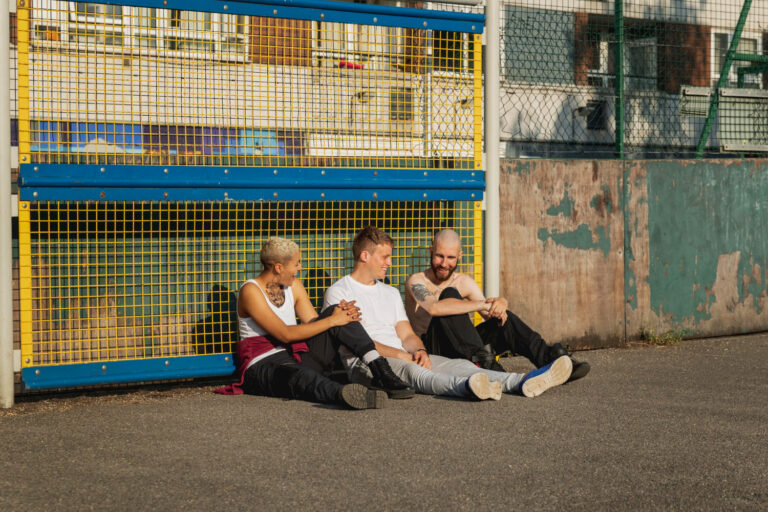From Streets to Stadiums: Football’s Universal Journey
Football doesn’t begin in the grandeur of 80,000-seat stadiums or with the roar of television commentary. It starts on dusty streets, uneven pitches, and makeshift goalposts. It begins with children kicking plastic bottles or worn-out balls between crumbling buildings or over fields of gravel. This humble genesis is not just where the game starts, it’s where its soul lives.
Football’s journey from backstreets to bright lights is more than a story of athletic development. It’s a global narrative of aspiration, community, and cultural unity. No matter where you go, whether it’s a favela in Rio, a township in Johannesburg, a neighborhood in Naples, or a refugee camp in Turkey, the game speaks the same language. It has an extraordinary ability to transform ordinary lives, connect divided societies, and create legends out of obscurity.
Football’s Birthplace Is the Street
Before the academies, agents, and analytics, football is learned through play. And play begins on the streets. There’s no curriculum, no coaching badges, only instinct, improvisation, and desire. It’s here where some of the game’s greatest talents were shaped. Think of Diego Maradona weaving through the streets of Villa Fiorito or Pelé juggling socks stuffed with paper in Bauru. These aren’t romanticized anecdotes, they’re reminders that the street is still the purest teacher of the game.
Street football teaches more than just technique. It instills creativity, quick decision-making, physical resilience, and a deep emotional connection to the ball. Players learn how to move in tight spaces, handle physical challenges, and think three steps ahead. The unstructured chaos of the street mimics life, and in learning how to navigate it, future stars emerge prepared for the highest stage.
The Role of Community
In many parts of the world, football is more than a game, it’s the pulse of the neighborhood. Matches are often less about the score and more about belonging. People gather around makeshift pitches to cheer, argue, and celebrate together. Football becomes the backdrop to communal storytelling and identity formation.
In poorer communities, the local game becomes a vehicle for dreams. When a talented youngster dazzles on the street, it’s not just personal pride, it’s hope for the entire community. If one of them can make it out, maybe others can too. That pressure can be immense, but so is the support. Coaches, friends, and even strangers pool resources to buy boots, find trials, or share connections. The street-to-stadium journey is rarely walked alone.
Pathways to Professionalism
For the lucky few who show promise and attract attention, the next step is often an academy. But even that transition is never guaranteed. Formal systems are not equally accessible everywhere. In countries with underdeveloped infrastructures, talent often slips through the cracks. Some turn to social media, uploading videos and hoping scouts will take notice. Others rely on luck, getting discovered during a chance tournament or friendly match.
In places like Brazil, Senegal, or Eastern Europe, entire industries have sprung up around spotting street talent early and getting them into structured training. Some of it is ethical. Some of it, alarmingly, is exploitative. But wherever there’s raw ability, there’s someone watching.
From there, the climb begins: regional academies, national tournaments, youth call-ups, club interest, agent negotiations, and, hopefully, a contract. The path is long, uncertain, and brutal. But it’s also intoxicating. Because every step forward is one closer to the dream.
The Stadium as a New Stage
The move from streets to stadiums isn’t just a physical change, it’s emotional. The roar of a crowd is different from the encouragement of a neighbor. The demands of a manager are different from the chaos of street rules. Players often speak of this transition as both exhilarating and disorienting.
Some adapt quickly, reveling in the structure, the discipline, and the chance to focus solely on football. Others struggle. The pressure mounts, the fun fades, and the expectations can feel crushing. It’s why so many players speak fondly of their roots, not just out of nostalgia, but because the street represents freedom. In the stadium, you’re owned by clubs, fans, media narratives. On the street, the game is yours.
Still, for most, the stadium represents triumph. It is proof that their journey, improbable and unpaved, was worth it. And for every goal scored, every cheer heard, they carry the echoes of the back-alley games where it all began.
Football and Global Mobility
Football is a rare passport. It can take players from war zones to world cups, from village obscurity to international fame. Countries like Nigeria, Colombia, and Croatia have seen footballers go from impoverished homes to becoming national heroes and global millionaires.
But mobility isn’t just about money. It’s about the opportunity to be seen, to make choices, to escape cycles of poverty or violence. And while many won’t make it, the few who do often change the lives of their families and communities forever. It’s no surprise that in many parts of the world, football isn’t just the number one sport, it’s the number one aspiration.
Street Football as Culture
The aesthetics of street football have infiltrated every part of the professional game. Tricks, flair, one-touch passing, expressive celebrations, all of these are cultural imports from street football. Brands now build entire marketing campaigns around the style, showcasing freestyle videos, small-sided games, and urban tournaments.
Even professional players, now media-trained and tactically drilled, celebrate their origins through tattoos, goal celebrations, and community projects. They understand that the street isn’t just where they started, it’s what shaped their identity.
Preserving the Soul of the Game
As football becomes more commercialized, there’s a growing fear that its soul might get lost. That stadiums full of tourists, VAR interventions, and sponsorship-driven decision-making might erase what made the game beautiful in the first place.
But the street won’t let that happen. It will always exist, because you don’t need money to play. All you need is something to kick and someone to play with. And as long as the game survives in that form, its essence will endure.
Clubs, governing bodies, and brands would do well to remember this. The future of the game doesn’t lie only in elite academies or billion-dollar TV deals. It lies in making sure that children around the world can still play freely, that local tournaments still matter, and that the journey from the street to the stadium remains open to all.
The Circle Completes
Interestingly, some professionals return to the street, not literally, but metaphorically. They start foundations, fund youth programs, or build pitches in their old neighborhoods. They try to recreate the conditions that birthed them, not out of charity, but because they know that’s where the next stars will come from.
In a way, the journey of football isn’t a straight line, it’s a circle. From streets to stadiums, and then back again, through mentorship, inspiration, and reinvestment. And in that cycle lies the enduring power of the game.
Because in football, everyone starts equal. Rich or poor, black or white, city or village, the ball doesn’t care. It rolls the same for everyone. And if you can control it, if you can make it dance, if you can dream with it, then the stadium lights might not be as far away as they seem.







